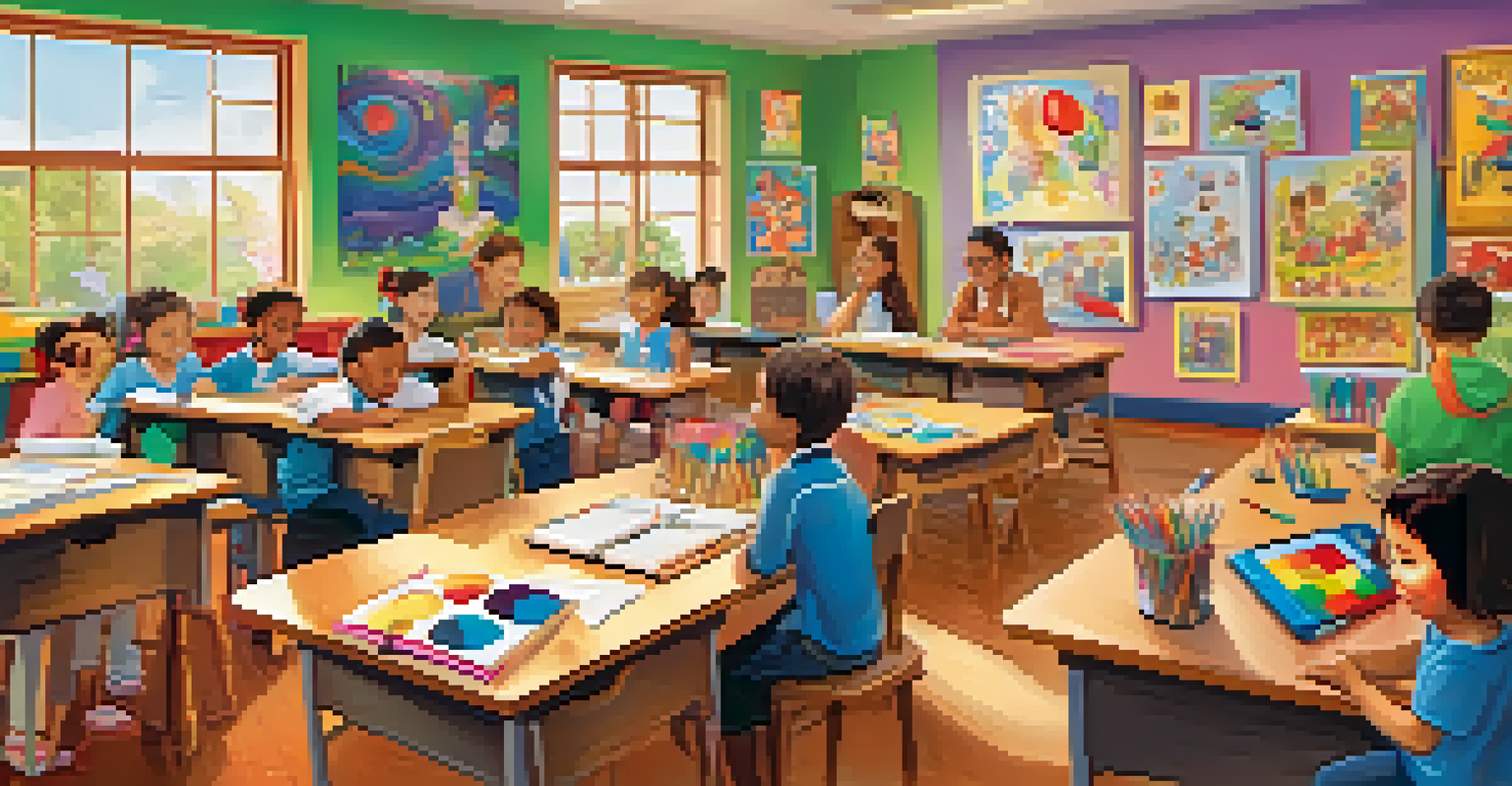Children's Films: An Exploration of Their Evolution and Themes

The Early Beginnings of Children's Cinema
Children's films have roots that trace back to the silent era, where visual storytelling took center stage. Early films, like 'Alice in Wonderland' (1903), captivated young audiences with whimsical imagery. These films often relied on simple narratives and imaginative visuals, setting the stage for what was to come.
Children are not a distraction from more important work. They are the most important work.
As technology advanced, so did the storytelling techniques, incorporating sound and color. The 1930s and 1940s saw iconic films like 'Snow White and the Seven Dwarfs,' which not only appealed to children but also brought families together. This era established a foundation for the enchanting and magical worlds that children's films would continue to explore.
The evolution of children's cinema was also marked by the introduction of animated features, which became a beloved genre. These films not only entertained but also imparted valuable life lessons, paving the way for future generations of filmmakers to create stories that resonate with young hearts.
The Golden Age of Animation
The mid-20th century is often referred to as the Golden Age of Animation, a time when studios like Disney dominated the industry. Classic films such as 'Cinderella' and 'Bambi' mesmerized audiences with their rich storytelling and breathtaking animation. These films not only entertained children but also introduced them to complex themes of love, loss, and resilience.

During this period, animation became a powerful medium for expressing emotions and morals. The characters were relatable, often facing challenges that mirrored the experiences of young viewers. This connection fostered a deeper understanding of life's ups and downs, making these films timeless treasures.
Children's Cinema's Rich Evolution
From silent films to the vibrant animations of today, children's cinema has developed a diverse array of narratives that resonate with young audiences.
Moreover, this era's emphasis on fairy tales and fables helped shape cultural narratives and values. The stories often included moral lessons, encouraging children to think critically about their actions and the world around them.
The Rise of Diverse Narratives
As society evolved, so did children's films, leading to a significant rise in diverse narratives. The late 20th century saw the emergence of films that celebrated different cultures, backgrounds, and experiences. Movies like 'Mulan' and 'The Princess and the Frog' showcased the importance of representation in storytelling.
The best way to make children good is to make them happy.
These films not only entertained but also educated children about the richness of various cultures. By introducing characters from different backgrounds, filmmakers encouraged empathy and understanding among young audiences. This shift in focus enriched the landscape of children's cinema, making it more inclusive.
Additionally, the exploration of unique themes, such as identity and belonging, became more prevalent. Children began to see themselves reflected in the stories, fostering a sense of confidence and acceptance.
The Impact of Technology on Storytelling
The advent of digital technology has revolutionized children's films, opening up new avenues for storytelling. The use of CGI and animation techniques has allowed filmmakers to create visually stunning worlds that captivate the imagination. Movies like 'Toy Story' and 'Frozen' exemplify how technology can enhance narrative depth and engagement.
Moreover, technology has also changed the way children interact with films. Interactive elements and streaming platforms provide opportunities for kids to engage with their favorite characters beyond the screen. This shift has transformed the viewing experience, making it more immersive and personalized.
Diversity in Storytelling Matters
The rise of films showcasing different cultures and experiences has enriched children's cinema, promoting empathy and understanding among viewers.
However, with these advancements also come challenges, such as the need for balance between screen time and real-world experiences. Filmmakers and parents alike are now tasked with ensuring that technology serves as a tool for creativity rather than a distraction.
Exploring Themes of Friendship and Adventure
Friendship and adventure are timeless themes that resonate deeply in children's films. Many stories revolve around characters forming bonds and embarking on thrilling quests, teaching valuable lessons about teamwork and loyalty. Films like 'The Lion King' and 'Finding Nemo' highlight the importance of friendship in overcoming obstacles.
These themes not only entertain but also provide children with relatable scenarios. Young viewers often find solace in the trials and tribulations of their favorite characters, learning that they are not alone in their experiences. The adventures they witness on screen inspire them to embrace challenges in their own lives.
Additionally, the exploration of friendship often extends beyond mere companionship. It delves into understanding differences, resolving conflicts, and celebrating diversity, enriching children's emotional intelligence and social skills.
The Role of Education in Children's Films
Education plays a crucial role in many children's films, often woven seamlessly into the narrative. Movies like 'Inside Out' and 'Zootopia' tackle complex themes such as emotions, mental health, and social issues, providing children with tools to navigate their own lives. These films offer lessons that extend beyond entertainment, fostering critical thinking and emotional growth.
By addressing important topics, filmmakers create a safe space for discussions between children and adults. These narratives encourage curiosity and open dialogue about feelings, relationships, and societal expectations. This educational aspect enriches the viewing experience, making it both enjoyable and enlightening.
Technology Transforms Viewing Experience
Advancements in digital technology have revolutionized how children's films are created and consumed, enhancing storytelling while posing new challenges.
Furthermore, the incorporation of educational themes reflects a growing awareness of the responsibility filmmakers have in shaping young minds. By blending fun with learning, children's films can empower the next generation to engage with the world around them.
The Future of Children's Cinema
The future of children's cinema holds exciting possibilities as filmmakers continue to innovate and adapt to changing audiences. With the rise of streaming services, there is greater access to diverse stories, allowing for a wider range of narratives to flourish. This shift has the potential to bring even more voices and perspectives to the forefront of children's entertainment.
Moreover, as social issues become more prominent in society, children's films are likely to reflect these changes. Expect to see more stories that challenge stereotypes, promote equality, and address environmental concerns, helping to shape socially conscious young viewers. The evolution of themes will not only entertain but also inspire action.

Ultimately, the future of children's cinema is about fostering creativity, empathy, and understanding. As we continue to explore new storytelling techniques and themes, the magic of children's films will undoubtedly endure, captivating hearts for generations to come.